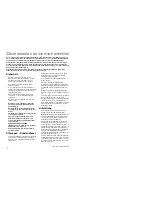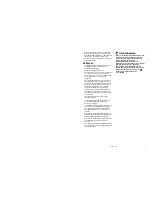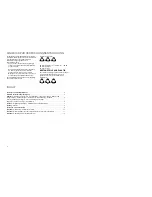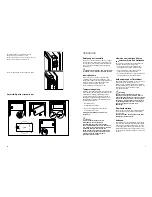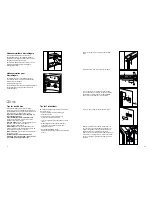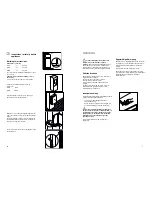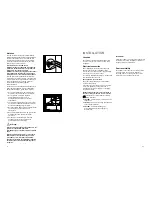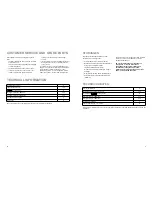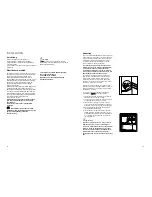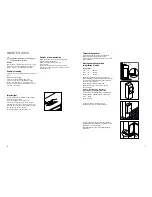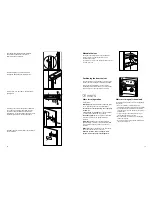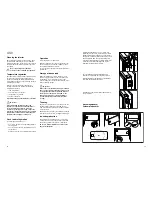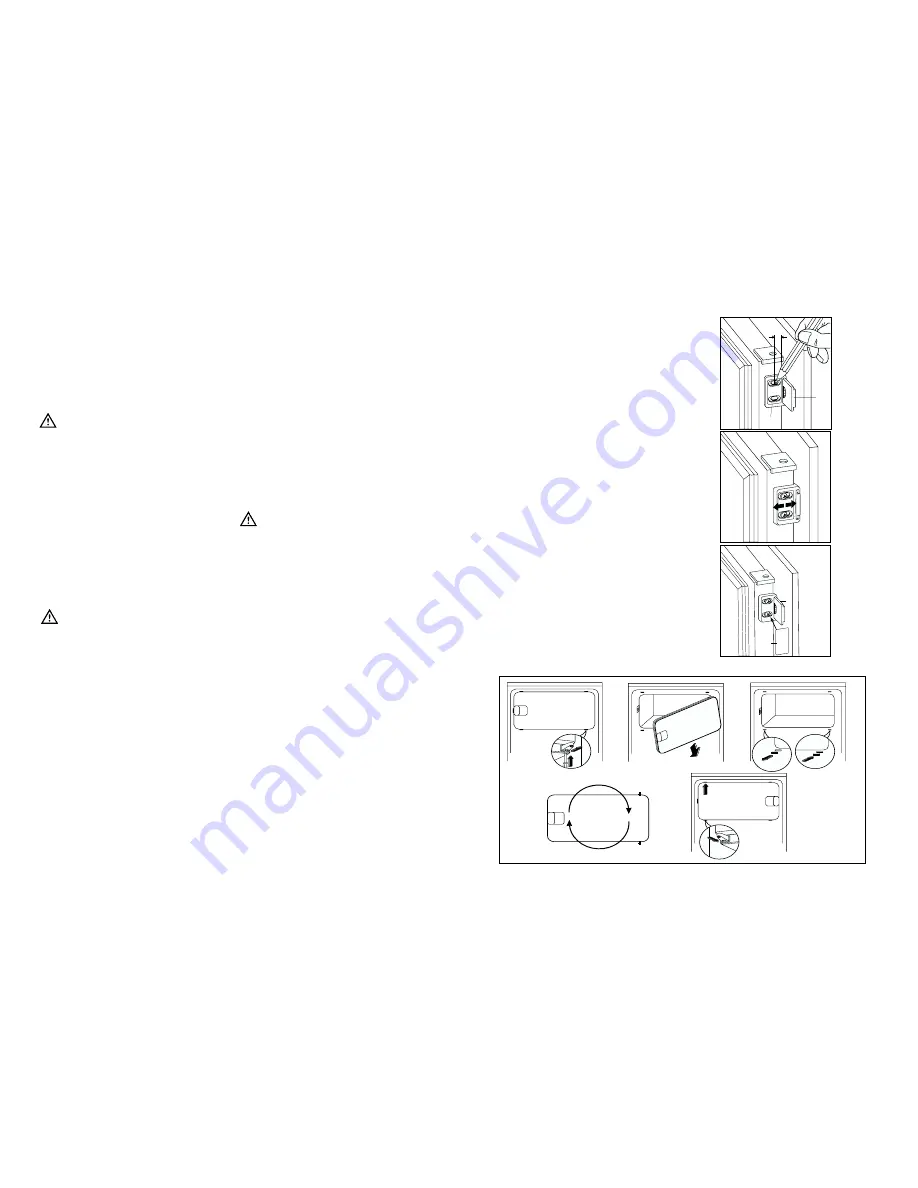
13
Anschlagwechsel
Verdampferfachtür
Gerätetür und Möbeltür auf ca. 90° öffnen. Den
Winkel (B) in der Schiene (A) einsetzen. Gerätetür
und Möbeltür zusammenhalten und die Bohrlöcher
anzeichnen (siehe Abb.). Winkel abnehmen und die
Bohrlöcher mit Ø 2mm und einem Abstand von 8
mm von der Türaußenkante ausführen. Den Winkel
wieder auf der Schiene anbringen und mit den
mitgelieferten Schrauben befestigen.
8mm
PR167
A
B
PR168
PR167/1
D
B
Für eine allfällig notwendige Ausrichtung der
Möbeltür, den Spielraum der Langlöcher nutzen.
Nach Beendigung der Arbeiten den einwandfreien
Verschluß der Gerätetür überprüfen.
Die Abdeckung (D) in die Schiene (B) eindrücken,
bis sie einrastet.
180°
16
Cleaning the interior
Before using the appliance for the first time, wash
the interior and all internal accessories with luke-
warm water and some neutral soap so as to remove
the typical smell of a brand-new product, then dry
thoroughly.
Do not use detergents or abrasive
powders, as these will damage the finish.
Operation
Insert the plug into the wall socket.
Open the refrigerator door and turn the thermostat
knob, clockwise, beyond the «O» (STOP) position.
The appliance will start to operate.
To stop operation, simply turn the thermostat knob to
position «O»
USE
Temperature regulation
The temperature is automatically regulated and can
be increased to achieve a higher temperature
(warmer) by rotating the thermostat knob toward
lower settings or reduced (colder) rotating the knob
towards higher settings.
However, the exact setting should be chosen
keeping in mind that the temperature inside the
refrigerator depends on:
•
room temperature;
•
how often the door is opened;
•
the quantity of food stored;
•
location of appliance.
A medium setting is generally the most suitable.
Important
If the ambient temperature is high or the
appliance is fully loaded, and the appliance is
set to the lowest temperatures, it may run
continuously causing frost to form on the rear
wall. In this case the dial must be set to a higher
temperature to allow automatic defrosting and
therefore reduced energy consumption.
Fresh food refrigeration
To obtain the best performance:
•
do not store warm food or evaporating liquids in
the refrigerator;
•
do cover or wrap the food, particularly if it has a
strong flavour.
•
Position food so that air can circulate freely round it.
Storage of frozen food
When first starting-up or after a period out of use,
before putting the products in the compartment let
the appliance run for at least two hours on the
coldest setting, then turn the thermostat knob to the
normal operating position.
Important
In the event of accidental defrosting, for example
due to a power failure, if the power has been off
for longer that the value shown in the technical
characteristics chart under “rising time”, the
defrosted food must be consumed quickly or
cooked immediately and then refrozen (after
cooling).
Thawing
Deep-frozen or frozen food, prior to being used, can
be thawed in the refrigerator compartment or at
room temperature, depending on the time available
for this operation.
Small pieces may even be cooked still frozen, directly
from the freezer: in this case, cooking will take longer.
Ice-cube production
This appliance is equipped with one or more trays
for the production of ice-cubes. Fill these trays with
water, then put them in the freezer compartment.
Do not use metallic instruments to remove the
trays from the freezer.


